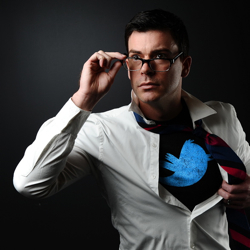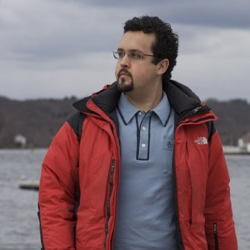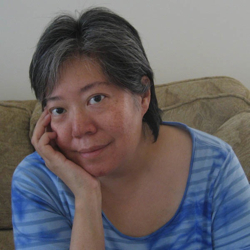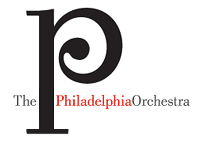With so many changes afoot in the American orchestral world, what do music directors see as particular challenges and opportunities? (more…)
Discussion Topic: Community
-
Video: Music Directors Discuss Challenges and Opportunities
Topic: Audience, Community, Creativity | Tags: alan gilbert, charles dutoit, cleveland orchestra, franz welser-möst, gustavo dudamel, la phil, mtt, ny phil, philadelphia orchestra, san francisco symphony, video, Yannick Nézet-Séguin
November 6, 2012 by Beth Hondl | Comments (0)
-
Video: The Changing Landscape
How has the relationship between the orchestra and its community changed over the past century? (more…)
Topic: Audience, Community, Creativity | Tags: alan gilbert, ed sanders, jesse rosen, margo drakos, mason bates, matthew vanbesien, neil harris, video
October 16, 2012 by Beth Hondl | Comments (0)
-
Podcast: Chapter Ten – Looking Ahead, in Philadelphia and Beyond
When The Philadelphia Orchestra emerged from Chapter 11 bankruptcy in July 2012, the ensemble became a canary fluttering back out of a deep dark mine. Philadelphia’s path forward will be closely watched, and not only because music lovers at home and around the world have such a stake in this beloved institution. In both its difficulties and its stategies for confronting and transcending them, The Philadelphia Orchestra strikes a resonant chord with other American orchestras, large and small.
This podcast was developed from our June 2012 behind-the-scenes discussion.
Chapter Ten – Looking Ahead, in Philadelphia and Beyond
Play | Download | Transcript
Topic: Audience, Community, Creativity | Tags: Afa Sadykhly Dworkin, alan gilbert, allison vulgamore, cleveland orchestra, deborah rutter, gary hanson, gustavo dudamel, jeremy rothman, joseph conyers, mtt, philadelphia orchestra, podcast, san francisco symphony, stanford thompson, steven winn, Yannick Nézet-Séguin
September 18, 2012 by Beth Hondl | Comments (0)
-
“Audience Experience” Starts Long Before the Lights Dim – How to Improve the Customer Journey
In this blog post, James Buckhouse, head of the Corporate Design team at Twitter, offers a new approach to “audience experience” using techniques drawn from technology and consulting companies. This post is the third of three winning entries from our recent American Orchestra Forum blog contest.

Blog contest winner James Buckhouse
Your audience experiences your organization long before the lights dim and far past the final ovation. Inspired by the TED talk by Peter Gregson on the user experience of the performing arts, this free downloadable workshop adapts techniques from technology and consulting companies to help performing arts organizations take care of their audience.
Other industries map this path as an extended customer journey. Performing Arts organizations can borrow this process to create an extended audience experience.
In a way, every arts organization perpetually remains a start-up: new music emerges from the chasm of cultural shifts, new audience members catch the drift; new ideas tilt the emphasis from one approach to another; new means of distribution and communication mingle our lives and our art in a braid of narrativity.
So let’s start! Let’s start up a new approach to the arts that proves value and retains the best of the old traditions, but also celebrates the birth of art—the new and unnamed—and dares to iterate.
–James Buckhouse
Download the Audience Experience Workshop PDF Instructions
Right-click the link above to download the workshop PDF or find it here: http://teamclassical.com/resources.html
James Buckhouse leads the Corporate Design team at Twitter, where he oversees the creation, production, strategy and design of all video and visual material for the company. Additionally, he is the founder of teamclassical.com. Prior to Twitter, he was Executive Creative Director at Duarte where he worked with Facebook, Google, HP and other high-profile tech companies. From 1996-2008, James built his story skills as a cinematographer and choreographer at DreamWorks Animation. James also served as a production designer for New York City Ballet, Oregon Ballet Theatre, and Pennsylvania Ballet.
Topic: Audience, Community, Creativity | Tags: blog contest, blog contest winner
July 18, 2012 by Beth Hondl | Comments (1)
-
What Professional Organizations Can Learn from Community Orchestras
Are professional orchestras pursuing artistic excellence at the cost of a true sense of community? In this blog post, Sam Tepperman-Gelfant argues that professional groups must “take the process of building community as seriously as they do perfecting their performances.” This post is the second of three winning entries from our recent American Orchestra Forum blog contest.

Blog contest winner Sam Tepperman-Gelfant
Community: it’s not just a polite word for amateur, it is the heart and soul of America’s thriving non-professional symphonies. Community orchestras deftly bridge the gap between classical performance and contemporary life that presents a daunting challenge to the future of classical music in this country. Building community is all about building relationships. The web of personal connections among performers, audience members, and the music itself give these groups a consistent energy and audience that many professional groups struggle to achieve.
I’ve played cello in the Bay Area Rainbow Symphony (BARS), for nearly five years now, and it’s hard to imagine life without it. Wednesday evenings I leave behind the workday to spend time with Brahms and Ravel, and also with my stand partner, David, and the other close friends I’ve made through the group. Many of us haven’t been motivated to practice since high school or college, but the camaraderie and connection (more…)
Topic: Audience, Community, Creativity | Tags: blog contest, blog contest winner
July 13, 2012 by Beth Hondl | Comments (1)
-
What do the future of American Orchestras and the America’s Cup have in common?
The America’s Cup and the American Orchestra have more in common than you might think, as Cheeko Matsusaka explores in this blog post. Originally from Newton, Massachusetts, Cheeko Matsusaka currently lives in Sarasota, Florida where she is a cellist with the Sarasota Orchestra. Hers is the first of three winning blog posts from our recent American Orchestra Forum blog contest.
Have we all focused too much on the [America’s] Cup’s proven past rather than understanding its potential? As such, the resulting changes are substantial. It is crucial to end the uncertainty and lay the groundwork for continuity. To put in place a calendar of regular racing; exciting racing that is shorter and sharper and more spectacular. Racing that matches the expectations of the Facebook generation, not the Flintstone generation.
Blog contest winner Cheeko Matsusaka
— Russell Coutts, CEO Oracle RacingWhat does the future of American Symphony Orchestras and the America’s Cup have in common? Aside from San Francisco, quite a lot. I’ve been following the event since the late 90′s and have always felt a strange sort of empathy for the Cup. It seems to share a common thread with professional music’s efforts to honor traditions and still allow the art to grow and have relevance to in a modern world. Both share the potential for breathtaking displays of beauty and power, but suffer from the old stereotype of closed doors and aloofness. Both struggle to dispel those misconceptions without alienating those who already support it. Both are trying to reach out to a new generation by jumping head first into the overwhelming mass of new technologies. The American Orchestra thoughtfully hesitates at this precipice, but the America’s Cup has the taken the fateful leap. I am watching carefully and taking detailed notes. If the planned America’s Cup event can maneuver a safe landing, they will serve as a standard bearer of adaptation and evolution in an era plagued by threats of extinction.
The thread between Orchestras and the America’s Cup resurfaced when I was having a bit of a disagreement with one of my colleagues. We were talking about a web and Facebook page for the musicians in my orchestra. The colleague thought we should focus our energies on a static webpage and forget about Facebook. He thought Facebook was a fad that would run its course. In addition, he feared we risked alienating people who didn’t do Facebook. Was he serious? (more…)
Topic: Audience, Community, Creativity | Tags: blog contest, blog contest winner
July 11, 2012 by Beth Hondl | Comments (3)
-
Live Blog: A Behind-the-Scenes Conversation with The Philadelphia Orchestra
What follows is a live blog of our behind-the-scenes conversation with leaders from The Philadelphia Orchestra on Saturday, June 9 at 3:00pm Pacific.
Participants include:
- Allison Vulgamore, President and CEO, Philadelphia Orchestra Association
- Jeremy Rothman, Vice President, Artistic Planning
- Joseph Conyers, Assistant Principal Bass
- Stanford Thompson, CEO, Play on Philly
The conversation was moderated by Steven Winn.
4:32pm Vulgamore: It’s about offering a palette of experiences to give people access to these great musicians.
4:28pm Thompson: I like to think of giving the audience something to hope for season after season – what will this look like, where are we headed. You have to get excited about the musicians and how they knock it out of the park every night.
4:24pm Vulgamore: When you’ve lost 40% of your audience – it’s critical that you focus on audience first. Philadelphia Orchestra is going to show the way through generational change and what new financial models for American orchestras will be.
4:21pm Question: Is cutting musicians’ salaries one way to put more towards education and marketing – if that’s what is needed to be successful? (more…)
Topic: Audience, Community, Creativity | Tags: allison vulgamore, jeremy rothman, joseph conyers, live blog, philadelphia orchestra, stanford thompson, steven winn
June 9, 2012 by Beth Hondl | Comments (3)
-
The Philadelphia Orchestra – Moving Forward
 For our last conversation of the American Orchestra Forum project we’ll be sitting down with leaders from The Philadelphia Orchestra on Saturday to talk about Audience, Community and Creativity. The orchestra will perform two concerts in San Francisco on their way back from a ten-day “Resdiency and Tour” of China, the first of its kind by an American orchestra.
For our last conversation of the American Orchestra Forum project we’ll be sitting down with leaders from The Philadelphia Orchestra on Saturday to talk about Audience, Community and Creativity. The orchestra will perform two concerts in San Francisco on their way back from a ten-day “Resdiency and Tour” of China, the first of its kind by an American orchestra.Having recently announced (more…)
Topic: Audience, Community, Creativity | Tags: allison vulgamore, philadelphia orchestra, Yannick Nézet-Séguin
June 7, 2012 by Beth Hondl | Comments (0)
-
Brent Assink: What’s Working and What Must Work
From audience engagement, music education, and a changing relationship with the community, to technology and the best use of social media… there are a lot of questions in today’s orchestral world and not always a lot of concrete answers.
Indeed, if you had to narrow it down and list just the top five things orchestras should work to change, what would they be?
In a recent talk at the University of Michigan’s American Orchestra Summit, Brent Assink, Executive Director of the San Francisco Symphony, took up that challenge in a keynote speech on the theme “What’s Working and What Must Work.” The American Orchestra Summit brought together arts administrators, educators, and musicians with the goal of inspiring “new ideas and new conversations” around such issues as productive collaboration, changing audiences and communities, and the training of the professional musician in the 21st-century.
Watch the full speech below or read the transcript at SymphonyNOW.
Topic: Audience, Community | Tags: american orchestra summit, brent assink
May 3, 2012 by Beth Hondl | Comments (0)


